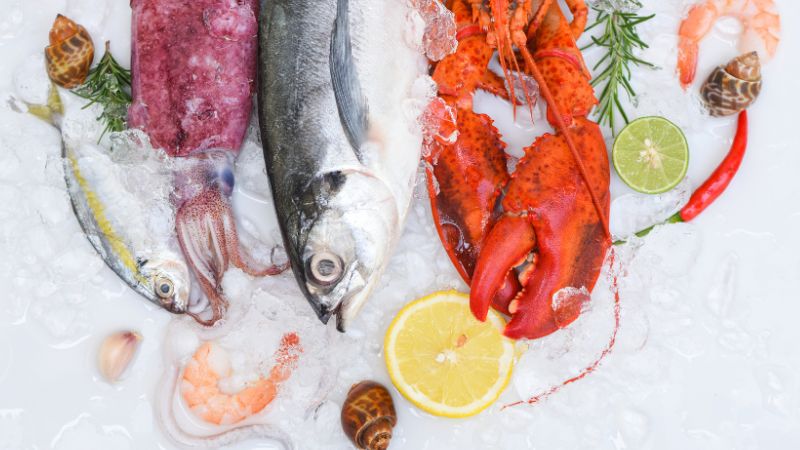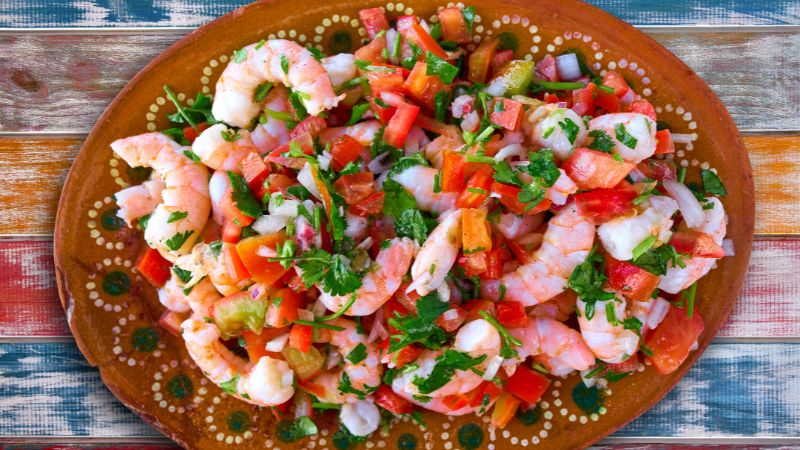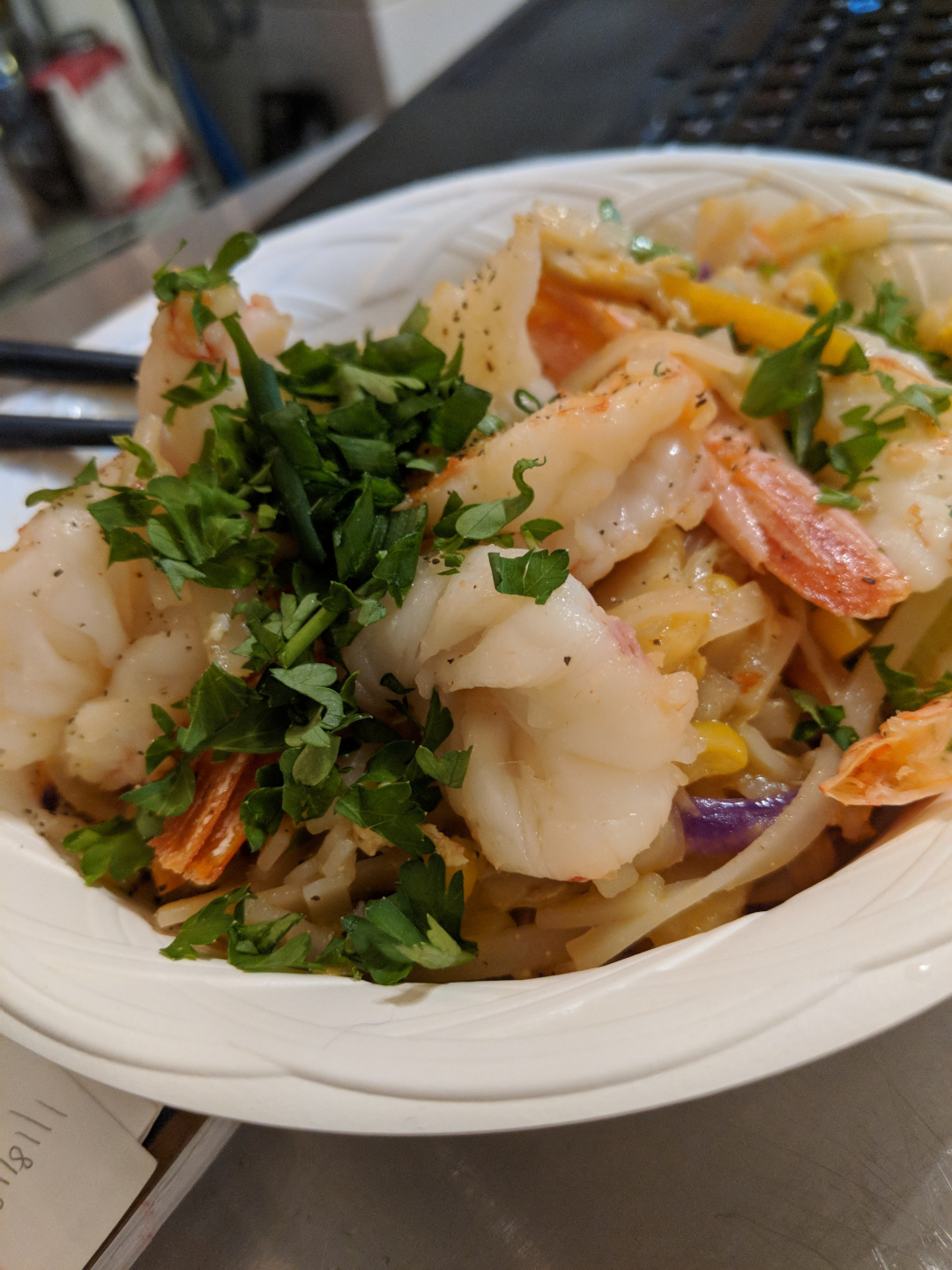what exactly is ceviche?
Ceviche is more than just a dish… it’s a cultural icon, deeply rooted in Latin American coastal traditions. While its exact definition varies by region, at its core, ceviche consists of raw seafood “cooked” in an acidic marinade of citrus juices, chili peppers, and fresh herbs. The acid denatures the proteins in the fish, giving it a firm, opaque texture similar to what you’d get from heat-based cooking.
Every country — and sometimes even individual chefs — puts their own spin on ceviche. In Peru, the birthplace of the most widely recognized version, it’s typically made with firm white fish, lime juice, red onion, aji peppers, and fresh cilantro, often accompanied by sweet potato and cancha (toasted corn). Mexican ceviche commonly includes tomatoes and avocados, while Ecuadorian versions might feature orange juice and a touch of ketchup for sweetness. In the Caribbean, conch is a popular choice, and coconut milk occasionally makes an appearance.
Despite these variations, the essence of ceviche remains the same: fresh seafood, bold flavors, and a refreshing, vibrant taste that screams summer no matter the season.
wait… cooking without heat? is that safe?

In short: it depends on the fish. The acid in citrus juice changes the texture and appearance of the seafood, but it does not kill bacteria or parasites in the same way that heat does. That means safety comes down to sourcing and handling.
The best way to ensure safe ceviche is to use:
➡️super fresh seafood
Ideally, purchase from a reputable fishmonger or market that specializes in sushi-grade fish.
➡️previously frozen fish
Freezing seafood at -4°F (-20°C) for at least seven days kills most parasites that could be present in raw fish. Many commercial suppliers do this automatically, especially for sushi and ceviche-grade fish.
➡️impeccable handling
Keep raw seafood cold, work on sanitized surfaces, and use clean tools to prevent cross-contamination.
If you’re concerned about raw fish but still want the flavors of ceviche, some people opt to lightly poach the seafood before marinating. This hybrid approach gives a similar texture while adding an extra layer of food safety.
what actually *is* cooking, anyway?
We usually think of cooking as applying heat to food, but in reality, cooking is any process that alters the texture, flavor, or structure of an ingredient. Heat, acid, salt, and even mechanical methods like pounding or curing can all “cook” food in different ways.
From a food safety perspective, heat is the gold standard because it effectively destroys bacteria and parasites. But ceviche’s acid marinade does something different; it denatures proteins, much like heat does, but without reaching the high temperatures that kill harmful microbes. That’s why sourcing high-quality seafood is non-negotiable when making ceviche.b
how to make the best ceviche
Once youʻve acquired your safe, high-quality seafood, making ceviche is suprisingly simple. Hereʻs basic blueprint you can adapt to your taste.
🐟choose your seafood
The best choices are firm, mild-tasting fish that hold up well in acid. Great options include:
- white fish: sea bass, snapper, halibut, mahi-mahi, flounder
- shellfish: shrimp, scallops, octopus, squid
- other seafood: tuna, sushi-grade salmon, conch
🍋🟩pick your citrus
Fresh lime juice is the go-to, but you can mix it up with lemon, orange, or even passionfruit juice for a tropical twist. A mix of citrus juices balances acidity and sweetness.
🌶️add flavor
- heat: aji amarillo (Peruvian yellow chili), jalapeño, serrano, or habanero peppers
- aromatics: red onion, garlic, scallions, fresh cilantro, or parsley
- extras: diced tomatoes, avocado, cucumber, sweet corn, mango, or coconut milk
🍋marinate wisely
- cut seafood into bite-sized pieces for even marination
- cover with citrus juice and let it sit for 10-30 minutes… longer for firm fish, shorter for delicate varieties.
- over-marinating can make the fish tough.
❄️serve fresh
Ceviche is best eaten immediately after marinating. Serve chilled with tortilla chips, plantain chips, or alongside sweet potato and corn for a traditional Peruvian touch.
ceviche variations to try
This recipe was developed with the Peruvian style of ceviche in mind. In Peru youʻll most likely find it made with firm, sweet, white fish along with lime juice, aji amarillo, red onion, sweet potato, and cancha. Iʻve gone a little maximalist by adding poached shrimp & calimari to the fish, veggies, and leche de tigre, as ceviche is wonderfully customizable to your tastes. Maybe one of these other styles will catch your fancy, instead; once you have the basics down, swapping out ingredients and playing with seasonings is easy (and fun!)
Here are a few to try and to inspire you:

🪇mexican style ceviche
shrimp, lime and orange juices, tomato, avocado, jalapeño, cilantro
🏝️caribbean conch ceviche
conch, coconut milk, lime juice, Scotch bonnet peppers, mango
🦐ecuadorian shrimp ceviche
poached shrimp, lime juice, tomato, red onion, cilantro, and a splash of ketchup
final thoughts
Ceviche is one of the most refreshing, versatile, and vibrant dishes you can make at home. With just a few ingredients and a little attention to detail, you can transport your taste buds to the coasts of Peru, Mexico, or the Caribbean—all without turning on the stove.
So go forth, grab some fresh seafood, and start experimenting with your own signature ceviche!


Leave a Reply